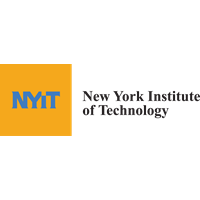Below is a summary of the abstract you submitted. Presenting author(s) is shown in bold.
If any changes need to be made, you can modify the abstract or change the authors.
You can also download a .docx version of this abstract.
If there are any problems, please email Dan at dar78@pitt.edu and he'll take care of them!
This abstract was last modified on March 16, 2021 at 7:09 p.m..

Bacteriophages, also known as phages, are viruses that infect bacteria and archaea with high specificity. In recent years, phages are becoming a promising weapon in our efforts to fight the growing antibiotic resistance of bacterial infections. Even though thousands of phage genomes have already been sequenced, these genomes constitute a small fraction of the total number of estimated existing phages. Currently, most of these sequences are stored in publicly available databases such as GenBank and PhagesDB. In this study, we explore the evolutionary relationships between 269 phages that infect the genus Arthrobacter in United States, with particular focus on three main clades: clusters AK (56 phages), AN (30 phages) and AZ (20 phages). Cluster AZ includes phages Eraser and Kaylissa that were isolated and annotated at New York Institute of Technology within the scope of the SEA-PHAGES program. For these three clusters, we implemented a Bayesian phylogenetic analysis to evaluate different evolutionary and growth models, identify evolutionary relationships between clusters and phages, estimate divergence times and geographic distribution. Our results show that Cluster AZ, which is closely related to cluster AV, appears to form different subclusters, one of which contains Eraser and another Kaylissa. Interestingly, phage Eraser shows high genetic similarity and is grouped together with phages Elezi, Asa16 and Niobe, which were isolated from Southern Connecticut University. While this subcluster appears to have been introduced in the region of Connecticut around 2007, phages Asa16, Niobe, Eraser, London and Elezi are estimated to share a very recent common ancestor from 2018. At the same time, Kaylissa phage clusters with Tbone, YesChef and PowerPuff which were identified and isolated in California. Their common ancestor is estimated about 10 years ago. Due to their high host specificity, diversity and abundance, the genetic and phylodynamic characterization of bacteriophages can provide valuable insights when studying their behavior and transmission patterns.
